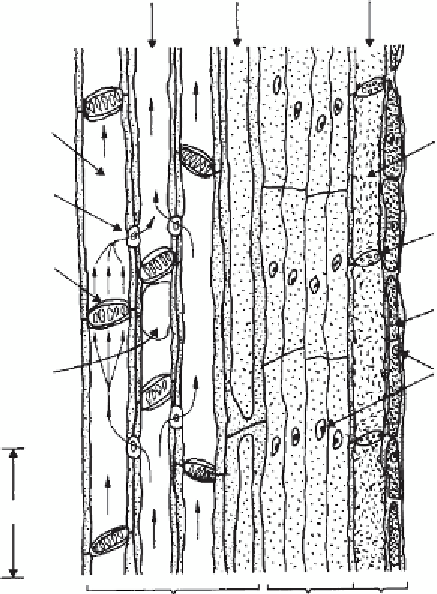Geoscience Reference
In-Depth Information
Fibre
cell
Sieve tube
Vessel
Vessel
member
Sieve tube
member
Bordered
pit
Sieve plate
Perforation
plate
Companion
cell
Va-
pour
Bubble of
water vapour
Nucleus
100
m
m
Xylem
Cambium
Phloem
Figure 6.9
The vascular tissue of plants is composed of vessel tubes and sieve
tubes. The sieve tubes serve for transport of organic compounds such as assimilates,
whereas the vessel tubes convey water and minerals, as well as organic compounds,
metabolized in the roots. Arrows within the vessels indicate the direction of sap low.
The pit density is in reality many times the number shown in the diagram(Ehlers and
Goss,
2003
). Reproduced with permission of CAB International, Wallingford, UK.
low path by transverse constrictions. Bordered pits are inserted into the strengthened,
ligniied longitudinal walls of the vessels, which are passage openings in a horizontal
direction (
Figure 6.9
). They allow the transverse transport of water into neighbouring
cells, but may seal off the vessel by closing membranes, when by accident the vessel
has dried out (Ehlers and Goss,
2003
).
In the vessels, water is conducted by mass low, like water through pipes, driven by
a gradient in hydraulic head. The long-distance transport is carried out at high speed.
The speed can be measured by heating the stem locally and measuring the tempera-
ture change at a point higher in the stem. In deciduous trees the velocity ranges from 1
to 40 m h
-1
, and in herbaceous plants from 10 to 60 m h
-1
. In the following paragraph
we calculate the hydraulic head gradient necessary to attain these low velocities.

Search WWH ::

Custom Search